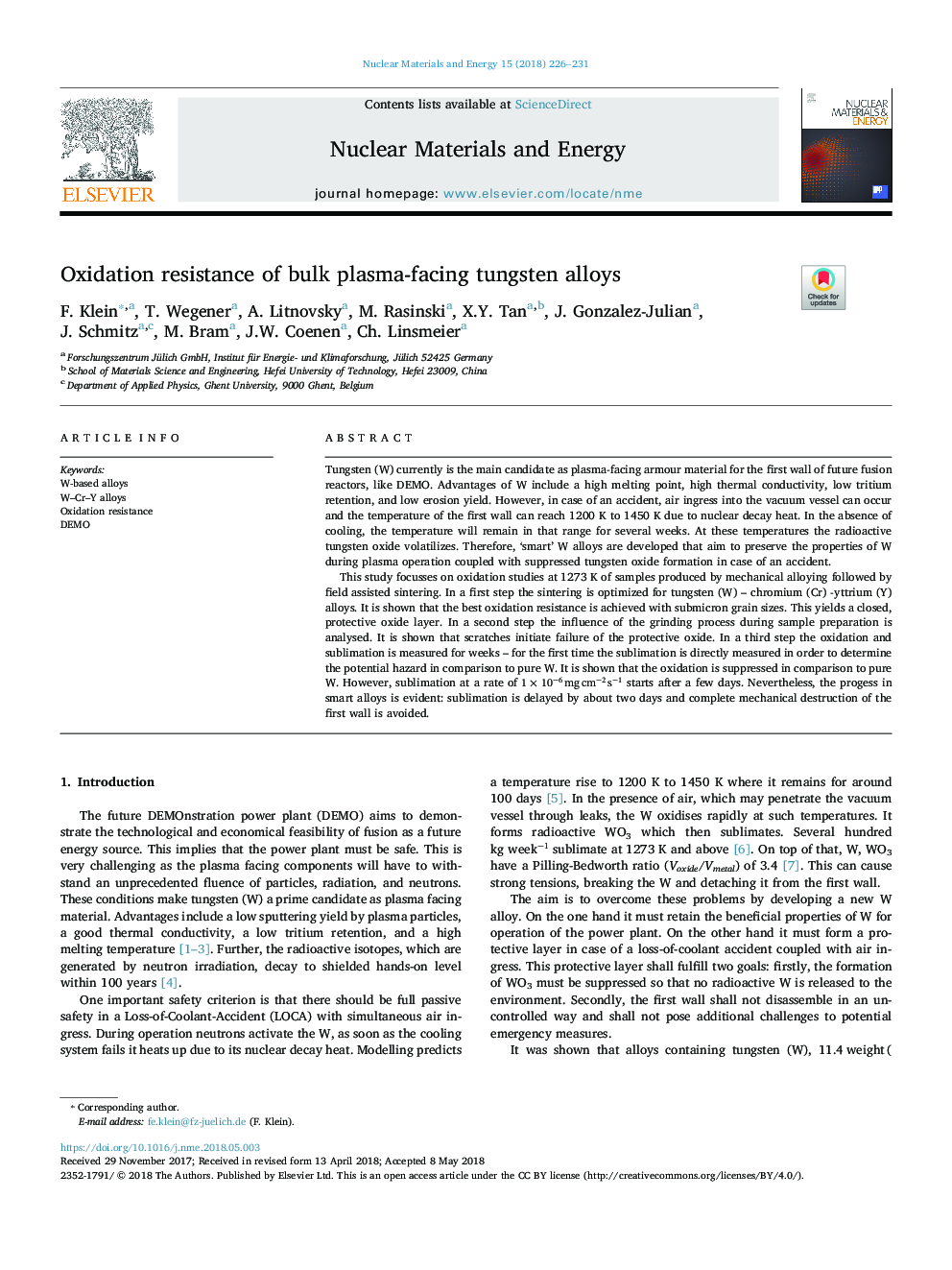| Article ID | Journal | Published Year | Pages | File Type |
|---|---|---|---|---|
| 7987343 | Nuclear Materials and Energy | 2018 | 6 Pages |
Abstract
This study focusses on oxidation studies at 1273Â K of samples produced by mechanical alloying followed by field assisted sintering. In a first step the sintering is optimized for tungsten (W) - chromium (Cr) -yttrium (Y) alloys. It is shown that the best oxidation resistance is achieved with submicron grain sizes. This yields a closed, protective oxide layer. In a second step the influence of the grinding process during sample preparation is analysed. It is shown that scratches initiate failure of the protective oxide. In a third step the oxidation and sublimation is measured for weeks - for the first time the sublimation is directly measured in order to determine the potential hazard in comparison to pure W. It is shown that the oxidation is suppressed in comparison to pure W. However, sublimation at a rate of 1Ã10â6mgcmâ2sâ1 starts after a few days. Nevertheless, the progess in smart alloys is evident: sublimation is delayed by about two days and complete mechanical destruction of the first wall is avoided.
Related Topics
Physical Sciences and Engineering
Energy
Nuclear Energy and Engineering
Authors
F. Klein, T. Wegener, A. Litnovsky, M. Rasinski, X.Y. Tan, J. Gonzalez-Julian, J. Schmitz, M. Bram, J.W. Coenen, Ch. Linsmeier,
